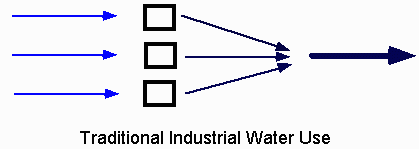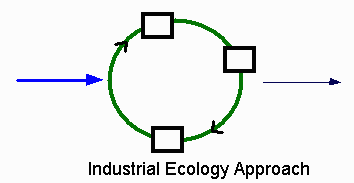 8>
8> 8>
8> Water Conservation
Water ConservationWater has received little attention in the shadow of environmental toxins and more limited natural resources. However, rising water costs, limited water supplies, and issues such as waste minimization and pollution control are making industries take a new look at the role for increased water-use efficiency, water reuse, and other technologies. The environmental impact of saving a gallon of water is far less than that of preventing the generation of a gallon of a hazardous waste; however, the benefits of water conservation lie in significantly reducing the tremendous volume of water currently used in industries. For example, an electronics manufacturing facility employing a few hundred people can use the same amount of water as a city of a few hundred thousand. Additionally, saving water is nearly always an economic advantage because it reduces overall wastewater treatment costs.
WATER CONSERVATION LINKS

However, if water used and discharge were instead integrated and used in series throughout a larger area (e.g. a plant or region) then less water could accomplish more and pose smaller effluent treatment problem.

The discipline of industrial ecology has emerged over the past several years as a framework for this type of alternative model for "greener" industrial organization. Such practices cause fewer environmental problems and increase efficiency for industries. Industrial ecology can reduce the cost of raw materials, material transport, manufacturing, waste treatment and disposal. The goal of industrial symbiosis (IS) is to develop industrial complexes in which byproducts of material and energy are used as feedstocks instead of being wasted. The same tenets can be applied to industrial water use. For example, the high quality water effluent used in a semiconductor manufacturer could be used as the cooling water in another plant.
LINKS TO INDUSTRIAL ECOLOGY SITES
 Industrial Ecology Compendium
Industrial Ecology Compendium Industrial Ecology Sourcebook
Industrial Ecology Sourcebook Journal of Industrial Ecology
Journal of Industrial EcologyThe first stage of this project consisted of a preliminary feasibility study conducted by Indigo Development in 1994, in conjunction with the U.S. Environmental Protection Agency. The study assessed the basic waste material flows in the Brownsville/Matamoros region and indicated the need for more sophisticated planning tools to identify potential exchanges. Currently, work is being done on this second phase.
OTHER BROWNSVILLE AREA LINKS
GIS Integration
Traditional planning tools that do exist are simply not able to search a large industry input/output database, identify candidate material flows between both existing and candidate industries and recommend a distribution of materials. Geographic Information Systems (GIS) integrate common database operations with the unique visualization and geographic analysis benefits offered by maps. Thus, GIS is an excellent framework for the combination of industry water characteristics and geographic data which will provide the necessary input for the exploration of water exchange possibilities between industries.
Research Goal
The ultimate goal of this research is to develop a method to determine a feasible and complex cost-based IS scenario for water exchange between industries through: